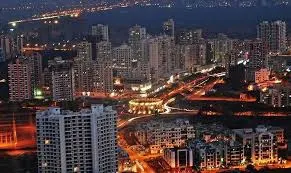Explore how Navi Mumbai is rapidly transforming into a smart city with advanced infrastructure, booming real estate, and a sustainable urban vision.
Navi Mumbai is stepping into the spotlight as one of India’s fastest-developing urban hubs. With strong infrastructure, green planning, and a growing economy, the city is redefining what it means to be a smart city in India.
A Planned Urban Dream Taking Shape
Located on the western coast of Maharashtra, Navi Mumbai was envisioned in the 1970s as a solution to the overcrowding of Mumbai. Over the decades, the city has evolved beyond a satellite town. Today, it’s a self-sustaining metropolis in its own right, driven by intelligent planning and sustainable growth.
Unlike its older neighbor, Navi Mumbai benefits from structured layouts, broad roads, and green belts. Its cityscape is marked by well-defined zones for residential, commercial, and industrial use. The Navi Mumbai Municipal Corporation (NMMC) and the City and Industrial Development Corporation (CIDCO) have played a pivotal role in maintaining this balance.

Smart Infrastructure and Digital Integration
Under the Government of India’s Smart Cities Mission, Navi Mumbai is fast adopting tech-driven solutions to improve urban living. From digitized civic services to smart traffic management systems, the city is incorporating digital tools that increase efficiency and reduce public inconvenience.
Initiatives such as smart water meters, online building permissions, and GIS-based solid waste management systems have already been rolled out. These innovations are not only making life easier for residents but are also setting a benchmark for other cities in India.
Green City with a Vision
Navi Mumbai stands out for its eco-friendly approach to urban development. With over 120 gardens and ample open spaces, the city has long prioritized environmental sustainability. Tree plantation drives, strict waste segregation policies, and lake clean-up initiatives are ongoing efforts led by both local authorities and community groups.
Moreover, the presence of the Parsik Hills, Kharghar Hills, and wetlands near Nerul and Vashi provide natural breathing spaces rarely seen in other Indian cities. These green zones are not just recreational hubs, but also protect local biodiversity.
Real Estate Growth and Investment Potential
The real estate market in Navi Mumbai has seen exponential growth in the last few years. Localities such as Kharghar, Ulwe, Panvel, and Taloja are becoming hotbeds of residential and commercial investment. The upcoming Navi Mumbai International Airport (NMIA), expected to be operational by 2025, is a major driver of this boom.
Experts believe that with better connectivity and infrastructure upgrades, the property value in these areas will continue to rise, attracting NRIs and investors from across India. In fact, many major developers are launching large-scale housing and mixed-use projects to cater to the rising demand.

Transport and Connectivity Boost
Connectivity is at the heart of Navi Mumbai’s appeal. The city is already well-linked through suburban railways and highways like the Sion-Panvel Expressway. Upcoming infrastructure projects such as the Mumbai Trans Harbour Link (MTHL) and metro corridors will significantly cut travel time to Mumbai and Thane.
Additionally, the long-awaited Navi Mumbai Metro is under development and expected to ease public commuting across key nodes like Belapur, Kharghar, and Taloja. These projects promise to integrate Navi Mumbai more deeply with the Mumbai Metropolitan Region (MMR).
Looking Ahead
As Navi Mumbai continues to expand its digital, environmental, and infrastructure goals, it presents a compelling model for future urbanization in India. The city is not only easing the pressure on Mumbai but is also attracting a new wave of professionals, entrepreneurs, and families looking for a better quality of life.
With its balance of nature and technology, and a firm focus on sustainable growth, Navi Mumbai is no longer just a suburb—it’s becoming a city of the future.





